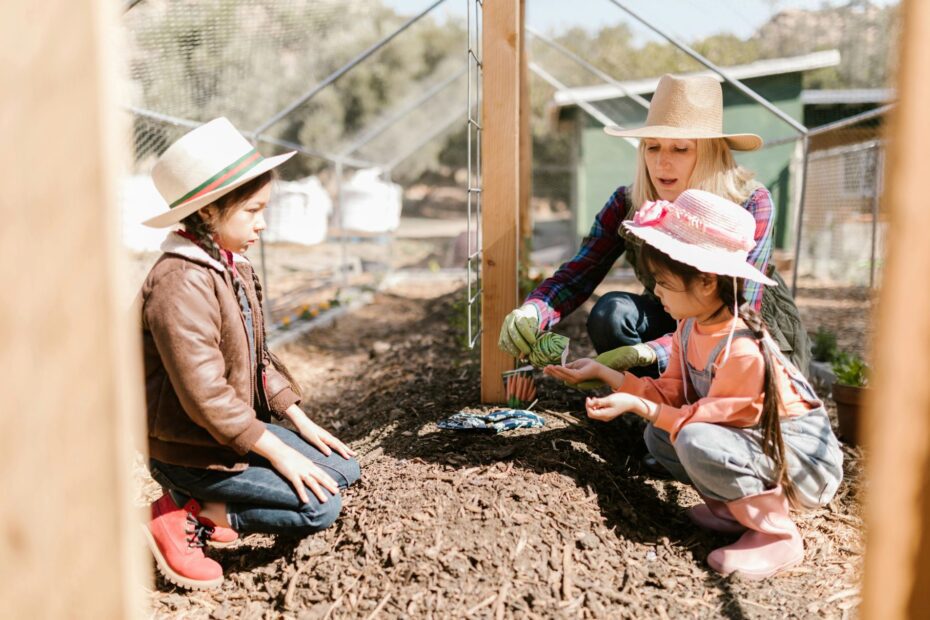Why schools should teach for the real world 🌍 –
What we're covering..
Introduction 👋
In today’s rapidly changing world, the gap between traditional education and the demands of the real world has never been more apparent. 👩🎓
As students move through the education system, they often find themselves lacking the practical skills and knowledge needed to succeed in various aspects of life beyond the classroom.
This raises a really important question: Why should schools focus on teaching for the real world?🌍
1. Preparing students for life beyond school 🏫
Schools play an extremely important role in preparing students for the challenges and opportunities they will encounter in the real world. 🛠️
By incorporating practical skills and knowledge into the curriculum, schools ensure that students are equipped with the tools they need to navigate adulthood confidently. 🗺️
2. Engaging students 🤝
It is common for students to disengage from school due to uncertainty of how lessons will help them in real life. 🤷♀️
For example, a student might complain that they’re unlikely to use “Pythagoras’ Theorem”, bunsen burners, or the biology of a leaf in real life. 🍃
Whilst a lot of people may not directly encounter these challenges, they teach transferable skills like problem solving, numeracy, and literacy. 🔀
Unfortunately, this way of teaching people new skills is quite abstract. 🥴
It is a lot easier for a student to appreciate the value of learning how solve real-world problems, like paying taxes! 💰
This makes life skills lessons an important tool for re-engaging students who have disengaged from education. Life skills education can make learning more relevant and engaging for students, providing a bridge between the classroom and the real world.
For example, a lot of students don’t know how much money they can earn, from the qualifications they’re working towards! 🤷♀️
Even just one careers lesson explaining salary expectations from different qualifications, can help students to understand the financial benefits of gaining qualifications and re-engage them.
3. Developing critical skills 🛠️
The real world demands a diverse set of skills, not just academic knowledge.
By teaching for the real world, schools can help students develop critical skills such as communication, problem-solving, collaboration, and adaptability, which are essential for success in any field. 👩🎓
4. Avoiding reality shock 😱
Many individuals experience a “reality shock” upon entering the workforce or living independently, as they realize they lack the practical skills needed to thrive. 🛠️
By teaching for the real world, schools can help prevent this shock by providing students with the skills and knowledge they need to transition smoothly into adulthood. 📈
5. Preparing students for work 💼
The job market is constantly evolving, with new industries emerging and technology rapidly advancing. 📈
Schools must adapt their curriculum to reflect these changes and ensure that students are prepared for the careers of the future. 🔮
Students don’t feel prepared for the world of work, but also employers don’t think they’re prepared either. 🤷♀️
In the rapidly changing landscape of the professional world, employers are increasingly voicing their concerns about the mismatch between the skills graduates possess and the skills essential for success in the workplace. ⚖️
The traditional academic curriculum, while valuable in many respects, often falls short in equipping individuals with the practical, interpersonal, and problem-solving skills demanded by today’s employers.
CBI research has found that:
- 60% of employers say that new graduates coming through the system are “unprepared for a commercial career”.
- 40% of employers state the biggest reason they cannot fill entry-level vacancies “isn’t a lack of people, it’s a lack of adequate skills”.
By incorporating real-world experiences into lessons, educators can align their offerings more closely with the expectations of employers.
Graduates who have been exposed to real-world scenarios and problem-solving exercises are better prepared to navigate the challenges of the professional world. 🗺️
6. Promoting lifelong learning 🔁
If you teach students to learn in an environment that doesn’t reflect the real world, you run the risk of teaching students that they can only learn in the classroom. 👩🏫
Teaching for the real world helps students to realise that they can learn anywhere, at any time, instilling a mindset of lifelong learning in students. This can encourage students to seek out new knowledge and skills beyond the classroom. 👩🎓
Ensuring that schools reflect real-world situations prepares students to adapt to changing circumstances and pursue continuous personal and professional growth throughout their lives. 📈
7. Improved student attainment🏆
One of the best reasons to teach real-world life skills in schools is the potential to improve student attainment.
Life skills, such as time management and critical thinking, can lead to better academic performance, setting the stage for success in various subjects.
The Barclays LifeSkills Programme in the UK found that:
- 86% of learners felt more positive about the future 🙌
- 89% of learners were more motivated to succeed, including doing well in their academic and vocational studies 🥇
- 82% of learners had more understanding of the skills needed for the workplace 💼
8. Social mobility 🚀
Teaching students how to thrive in the real world has the potential to level the playing field, and give students from disadvantaged backgrounds the opportunity to improve their circumstances.
Learning about topics like budgeting, taxes, and debt, can have a huge impact on the financial future of students. 💰
By teaching skills such as financial literacy and job preparation, schools can empower students from all backgrounds to pursue their dreams. ✨
9. Parents don’t feel prepared 🤷♀️
Whilst a lot of people might argue that it is the job of parents to prepare students for the real world and pass down life skills, lots of parents don’t feel prepared to teach them.
According to The Independent, nearly half of parents don’t feel equipped to teach their children important life skills.
Schools can bridge this gap by providing comprehensive life skills education, alleviating the concerns of parents who want the best for their children.
10. Standing out as an institution 🌟
Schools that stand out by preparing students for the real world can enhance their reputation and become more appealing to students and their families.
This can lead to increased enrollment and support for the school. 🙋♀️
11. Improved student behaviour 😇
Students can often be disruptive in lessons due to a lack of appreciation of the value that teachers can add to their lives. 👎
In addition, students are often unaware of the challenges of adulthood, and how school can support them towards becoming independent adults. 🪜
Preparing students for the real world can help students to understand the value that teachers can have towards helping them achieve their goals, and encourage them to take school more seriously, reducing behavioural issues within lessons. 👍
12. There’s increased flexibility in the curriculum 🏄♀️
In a lot of education systems teachers are being given more flexibility around what they teach.
School curriculums are becoming more and more flexible, enabling educators to tailor their lessons to their students’ needs, and their local landscape. 🗺️
This means that some teachers can start to write their own curriculum of learning for their students. 📝
Giving teachers more flexibility can help them to make sure that learning is:
- relevant and useful for students 👍
- tailored to the geographical area the students are living in 🧵
- making use of opportunities for students in their local area 🗺️
- more personalized for students and their ambitions 🪞
A lot of teachers believe that schools should teach for the real world, and can use this flexibility to create more opportunities for students to learn life skills in their learning plans.
In countries such as Wales, United Kingdom, individual schools are even being empowered to write their own curriculums, making each schools’ provision unique and tailored to their area. ✍️
This offers a lot of opportunity for schools to incorporate real world scenarios into their curriculums, to meet the needs of their students.
Incorporating the real world into the curriculum has never been easier for schools to implement, making now a great time to start providing life skills lessons.
13. Increased availability of free resources 📚
More than ever, there are free resources available to help prepare students for the real world.
The Grown-Up School provides 100+ completely free grown-up lessons and free worksheets to help learn life skills!
There is also support and resources available from places like:
- Charities
- The internet – you can learn so much from researching online!
- Youtube videos
- Podcasts
- TV series
- Local businesses
- Motivational speakers
- Banks – financial education programmes
14. Improved post-school attainment 🏆
Schools teach for the real world support their students to succeed not only academically but also in their personal and professional lives. 👨💼
This success can contribute to the school’s reputation and legacy, and encourage positive relationships with past students. 🤝
More research 🕵️♀️
In addition to there being more resources available to learn real world life skills, there is also more research demonstrating the desire and need to learn them.
This includes studies such as:
- Age-Specific Life Skills Education in School: A Systematic Review
- Significance Of Life Skills Education
- The Status of Life Skill Education in Secondary Schools -An Evaluative Study
Conclusion 👍
So that’s it!
There are lots of different reasons why schools should teach for the real world, such as:
- Preparing students for life beyond school 🏫
- Engaging students 🤝
- Developing critical skills 🛠️
- Avoiding reality shock 😱
- Preparing students for work 💼
- Promoting lifelong learning 🔁
- Improved student attainment🏆
- Social mobility 🚀
- Parents don’t feel prepared 🤷♀️
- Standing out as an institution 🌟
- Improved student behaviour 😇
- There’s increased flexibility in the curriculum 🏄♀️
- Increased availability of free resources 📚
- Improved post-school attainment 🏆
Hopefully this article has helped you to understand better why schools should teach for the real world.
If you know any friends or family members who might benefit from learning about why schools should teach for the real world, share this post with them!
Finally, don’t forget to check out our similar articles below!
Similar articles to “Why schools should teach for the real world 🌍” ⬇️
Why should schools teach life skills? 12 reasons why your school should teach them 👩🏫
How to use social media without hurting your mental health 🩹
What am I good at? 25 valuable skills
10 areas of life to set goals for 🎯
How to set goals for 2024 (that you actually achieve!) 🗓️
10 ways to be less hard on yourself 💖
133 ways to make someone feel special 💖
Are life skills taught in schools? 🛠️
Teamwork makes the dream work! How to work well in a team 🧑🤝🧑
What do employers look for in a CV/resume? Top tips to stand out ✨
What do employers look for? The top 3 qualities employers want from you 🌟
The 6 main types of job interview (and how to prepare for them!)👨💼
5 ways to improve your mental wellbeing 🧠
How can basic maths skills help in everyday life? ➗
How to cancel a job interview (with examples!) 📱
🎓
Follow us!
for free daily Grown-Up lessons 🙌🎉



